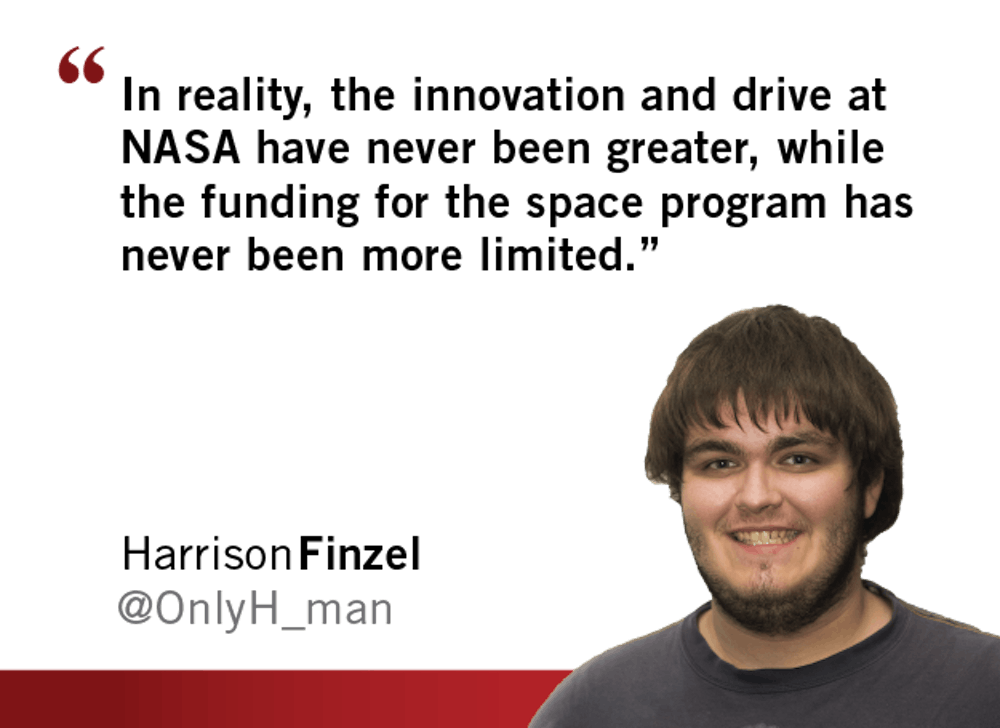With the recent selection of Boeing and SpaceX as NASA’s new private space carriers, the stage is set again for the U.S. to make enormous strides in space travel, vis-à-vis other nations. Instead of using the costly Russians to ferry our astronauts up to the International Space Station, we will now be contracting American companies to do so. Tempering the excitement of this new development is the realization that space travel is no longer solely under the jurisdiction of the world’s governments — it is now a marketplace, with Boeing and SpaceX offering services just like taxi cabs and private limousines do on earth.
This marks a radical change in how we will soon view space, should this trend continue. The senses of discovery and wonder that drive investment into space will soon be replaced by the drive for profit. Opening space to the marketplace will transform the final frontier into a cutthroat rat race, where CEOs are more important than astronauts.
There is a reason that highways, education and the military are government-run: As markets, they don’t work. We don’t live in a country where we have to pay a toll on every road we drive or individually hire a mercenary group to protect our borders and neighborhoods, because establishing a market in these areas is complete nonsense. Public goods are paid for by and benefit the public as a whole, and space needs to remain one of these esteemed public spheres.
If we want to cheapen the experience of space travel, then establishing a private monopoly is the way to go. If the goal is to make space travel inexpensive, however, then the only answer is larger investment into our national space program. Everyone's favorite astrophysicist, Neil deGrasse Tyson, put it in very simple terms in his letter to the Senate:
"Right now, NASA's annual budget is half a penny on your tax dollar. For twice that — a penny on a dollar — we can transform the country from a sullen, dispirited nation, weary of economic struggle, to one where it has reclaimed its 20th century birthright to dream of tomorrow."The current budget for NASA is a paltry one-ninth of what it was during the competitive peak of the Space Race in 1966. Our developments in space have slowed down not because we lack innovation or technology, but simply because of underfunding. It’s a tragic and disastrous cycle; as NASA’s returns start to shrivel up, the desire for Congress and the American public to further invest into NASA also falls.
However, NASA certainly deserves another chance to impress. These are the same people whose innovation spurred the creation of cordless tools, memory foam, and ear thermometers, among literally thousands of other inventions that bridge the energy, medical, mechanical, robotics and computer fields.
The direct benefits of the space program have greatly eclipsed this, expanding our scientific knowledge in virtually all areas of study while promoting even more future research. The dozens of pet projects that NASA is ready and willing to build span a variety of sciences like astrobiology, astrophysics, materials science, aerodynamics, and more.
One particular project could potentially bring us a near-endless supply of space fuel from the moon, while others will expand our knowledge about our own planet by investigating remarkable bodies in our own solar system like the moons Titan and Europa. In reality, the innovation and drive at NASA have never been greater, while the funding for the space program has never been more limited.
We are on the cusp of technological breakthroughs in space that have gone unmatched since the 1969 moon landings — and the money to make them happen. At the peak of our scientific acumen, we should be dedicating ever more money to the scientific causes of today, instead of strangling the last funds out of already struggling research institutions and administrations. The solution to space exploration, like a great deal of our other problems, resides within Congress and the voters and not in the monopolistic machinations of a newly carved-out market.
Reach the columnist at hfinzel@asu.edu or follow him on Twitter @OnlyH_man
Editor’s note: The opinions presented in this column are the author’s and do not imply any endorsement from The State Press or its editors.
Want to join the conversation? Send an email to opiniondesk.statepress@gmail.com. Keep letters under 300 words and be sure to include your university affiliation. Anonymity will not be granted.
Like The State Press on Facebook and follow @statepress on Twitter.





